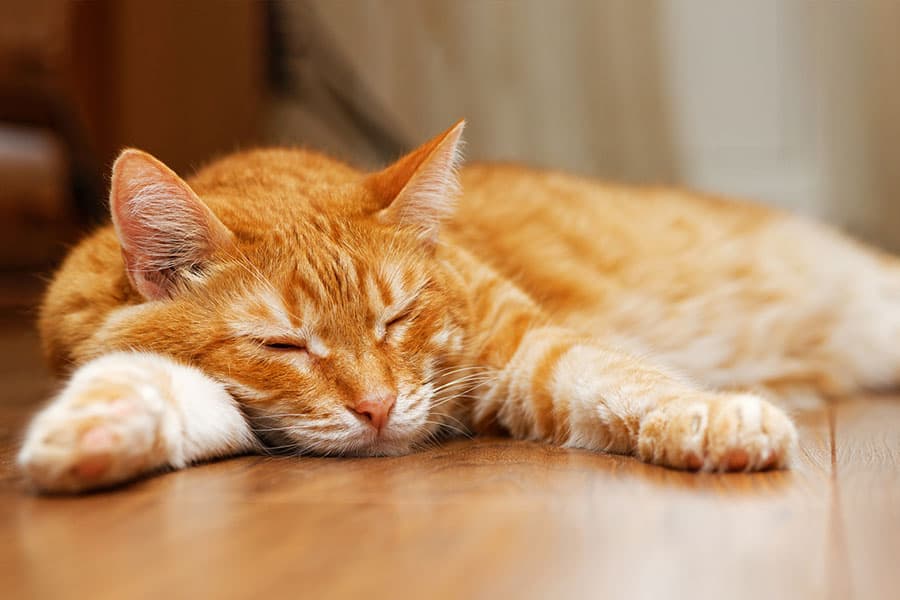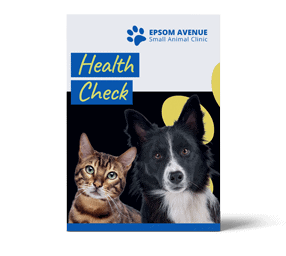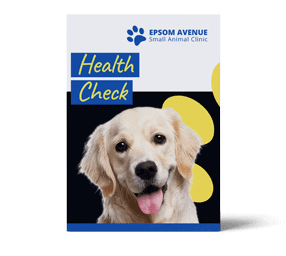Hyperthyroidism In Cats

What is hyperthyroidism?
Hyperthyroidism (overactive thyroid glands) is a very common disorder of older cats.
It is caused by an increase in production of thyroid hormones from the thyroid glands, which are situated in the neck.
Thyroid hormones are responsible for regulating many body functions, including growth and activity levels, but in older animals its most profound effect is on metabolism.
Hyperthyroidism causes a high metabolism, which has many negative effects on the body. Weight loss, a high heart rate and high blood pressure are just a few of the common problems encountered by hyperthyroid cats.
If left untreated, the increased metabolism will eventually cause organ failure (heart, kidney, blindness due to retinal detachment) and premature death.
What causes feline hyperthyroidism?
Most cases of hyperthyroidism in cats are because of a benign change to one or more of the thyroid glands called ‘hyperplasia’ or ‘adenoma’. These cause enlargement of the gland and cause it to produce too much of the hormone thyroxine, also known as T4.
In a small proportion of cases (< 5%), hyperthyroidism can be caused by a malignant cancer of the thyroid gland called thyroid carcinoma.
Despite its frequency, the underlying cause(s) of this common disease is/are not known.
Signs of hyperthyroidism?
The most common signs of hyperthyroidism are:
- Weight loss
- Increased appetite
- Increased drinking and urination
- Restlessness and vocalisation
- Gastrointestinal upset
- Rough hair coat
Besides the more easily identifiable symptoms listed above, other symptoms might be more obvious to your vet. That’s why it’s so important to get older cats checked over more regularly. Your vet may notice:
- Weight loss – so make sure you weigh your cat regularly
- An excessively fast heart rate
- A goitre (an enlarged thyroid gland, often noticeable in the neck)
- Behavioural changes – hyperthyroid cats are often fidgety and can be irritable
- Excessive loss of muscle mass so that the bones of the spine and pelvis become prominent
How is hyperthyroidism diagnosed?
In most cases, a single blood test measuring levels of thyroid hormone (T4) quickly confirms the diagnosis. Where possible however it is important to perform a general blood profile and urinalysis. Hyperthyroidism is common in older cats, but these cats commonly also have additional medical conditions such as chronic kidney disease and diabetes mellitus. Any concurrent illness can impact on how the hyperthyroidism will be treated.
Checking the cat’s blood pressure is also recommended since about 20% of cats with hyperthyroidism are found to have high blood pressure. High blood pressure (systemic hypertension) can be treated with medication.
In some cases, the diagnosis of hyperthyroidism can be more challenging because other illnesses may be present. In cats whose signs are consistent with hyperthyroidism, but thyroid levels are mid-to-high, then further testing and imaging can be useful to make a final diagnosis.
How is hyperthyroidism treated?
There are 4 options for the treatment of hyperthyroidism in cats. These include anti-thyroid medication, surgery, diet, and radioiodine therapy. Each option has advantages and disadvantages. The best treatment for your cat must be determined by you, your vet, and your cat’s health status. Management strategies may change over time, based on your cat’s response to the treatment.
Anti-thyroid drug therapy (usually given every 12hrs lifelong)
Anti-thyroid drugs act by interfering with the production of thyroid hormone. These drugs control hyperthyroidism, but do not cure it. Your cat will need treatment for the rest of his life.
As with any drug, there can be adverse reactions. These include loss of appetite, vomiting, depression, bleeding, liver problems, facial swelling, and itching. Pills are given two times a day. Periodic exams are needed to check hormone levels and adjust the dosage.
A trans-dermal gel applied to the ear can also be considered but has less predictable results for managing hyperthyroidism.
Strict, prescription diet
An iodine-restricted diet (Hill’s Prescription Diet Y/D) is available commercially. Consumption of this diet by a hyperthyroid cat decreases production of thyroxine by the thyroid gland by limiting the amount of iodine necessary for thyroid hormone production. Cats must eat only this diet lifelong! This means absolutely no treats, no people food, and no scavenging or hunting. Any food other than the prescribed diet could ruin the careful balance of iodine intake necessary to improve hormone levels.
Surgical intervention
Thyroidectomy is a surgical procedure which involves removing one or both thyroid glands. Usually, the affected thyroid gland is removed (unilateral thyroidectomy) and the remaining side checked. Though the surgery is generally curative in most cases, complications after surgery are possible. If one thyroid gland is removed, the other thyroid gland may become diseased over time and will also have to be removed.
There is also a chance that thyroidectomy will cause damage to the parathyroid gland. This can cause calcium levels to drop, which can lead to serious complications such as tremors and seizures. Damage to the parathyroid gland is generally managed with calcium and vitamin D supplementation, which is usually successful. For cases of thyroid cancer, there is a chance that the condition can recur following surgery.
Thyroidectomies are a specialist surgery.
Perth’s only centre for radioiodine therapy
There is really no argument that radioiodine therapy (I-131) is the treatment of choice for cats with hyperthyroidism. It has the advantage of being curative in most cases with no ongoing treatment. The radioactive iodine is administered as a single injection and is taken up by the active (abnormal thyroid tissue) and subsequently emits a high-energy α-particle which destroys this tissue. Whilst the radiation destroys the affected abnormal thyroid tissue, it does not damage surrounding tissues or the parathyroid glands.
The I-131 can be given as a capsule or as an injection, however we use a calculated injectable dose, as part of our gold-standard treatment. This includes a thyroid scintigraphy scan to evaluate the stage and extent of thyroid tumours, allowing us to calculate the lowest I-131 dose possible to achieve euthyroidism.
There are no significant side-effects with this treatment, but because cats are temporarily radioactive, they must be kept hospitalised for a short period of time (usually 5 days) following treatment.
Epsom Ave Vet is Perth’s only approved facility for administering I-131.

Protocol for Radioactive Iodine Treatment
A strict protocol is adhered to in all nuclear medicine cases to ensure the safety of your pet, your family, and our staff. We also aim to keep you informed during all stages of the treatment.
Consultation
Radiation therapy is performed by qualified staff on Mondays. Therefore, consultations for hyperthyroid cats are held on Monday mornings. During the consultation your cat will be thoroughly examined, their records assessed, and pathology results analysed. Your cat will be admitted into hospital after this consultation.
Sedation
To reduce any anxiety and enable thyroid scanning, all cats are sedated prior to their scan. The drugs used for this purpose are selected to have minimal side effects.
Thyroid Scanning
Before treatment a small dose of a radioisotope Technetium 99m is given to each cat. Once this has had time to concentrate in the thyroid gland (about 20-30 minutes) a radiation emission scan is taken. The amount of isotope taken up by the gland is used to calculate the therapeutic dose of radioiodine.
Method of Treatment
The radioactive iodine is given as a single injection under the skin. This causes minimal discomfort to the cat during treatment and recovery.

Aftercare
Hospitalisation
After treatment cats are kept in our isolation ward until their radiation levels are below Government EPA standards. During their stay, they are regularly checked by the in-hospital vet, who will keep you advised on your cat’s progress.
Discharge
Cats are not discharged until their output of radiation is deemed safe, usually after 5-7 days.

View Our
Pricing Guide

View Our
Services Brochure

View Our Optimum
Health Checklist
Contact us
See you and your furry friend soon!



